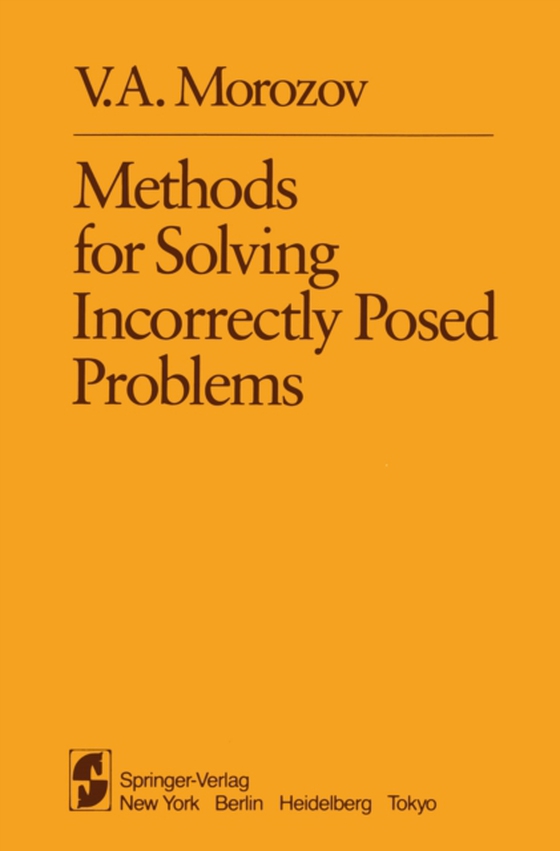
Methods for Solving Incorrectly Posed Problems e-bog
436,85 DKK
(inkl. moms 546,06 DKK)
Some problems of mathematical physics and analysis can be formulated as the problem of solving the equation f F, (1) Au = f, where A: DA C U + F is an operator with a non-empty domain of definition D , in a metric space U, with range in a metric space F. The metrics A on U and F will be denoted by P and P ' respectively. Relative u F to the twin spaces U and F, J. Hadamard P-06] gave the follo...
E-bog
436,85 DKK
Forlag
Springer
Udgivet
6 december 2012
Genrer
PBKS
Sprog
English
Format
pdf
Beskyttelse
LCP
ISBN
9781461252801
Some problems of mathematical physics and analysis can be formulated as the problem of solving the equation f F, (1) Au = f, where A: DA C U + F is an operator with a non-empty domain of definition D , in a metric space U, with range in a metric space F. The metrics A on U and F will be denoted by P and P ' respectively. Relative u F to the twin spaces U and F, J. Hadamard P-06] gave the following defini- tion of correctness: the problem (1) is said to be well-posed (correct, properly posed) if the following conditions are satisfied: (1) The range of the value Q of the operator A coincides with A F ("e;sol vabi li ty"e; condition); (2) The equality AU = AU for any u ,u DA implies the I 2 l 2 equality u = u ("e;uniqueness"e; condition); l 2 (3) The inverse operator A-I is continuous on F ("e;stability"e; condition). Any reasonable mathematical formulation of a physical problem requires that conditions (1)-(3) be satisfied. That is why Hadamard postulated that any "e;ill-posed"e; (improperly posed) problem, that is to say, one which does not satisfy conditions (1)-(3), is non-physical. Hadamard also gave the now classical example of an ill-posed problem, namely, the Cauchy problem for the Laplace equation.
 Dansk
Dansk

